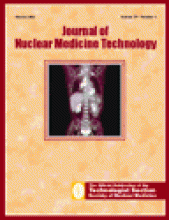As nuclear medicine technologists, we are part of a variety of health care profession communities. These communities include:
Nuclear medicine… general, and singularly focused area
Radiology (sometimes)
Medical imaging
Radiologic sciences and therapy
Allied health.
I have always thought that those of us in nuclear medicine understood that we were part of larger groups in some tangential or even integral way. I also thought that everyone in health care understood that there are essentially three identified “groups” or categories of health care professionals: physicians, nurses, and allied health. It is evident from this that allied health professionals include all of the health care professionals except physicians and nurses. And this is, in fact, how the government defines allied health. By this definition, it is clear that allied health encompasses scores of health care professions and occupations.
Allied health professions are often grouped together in postsecondary centers of education. There are schools, colleges, and departments of allied health in a great number of colleges and universities throughout the country. In career and college directories, health care careers are listed individually but are also categorized as one of the three health care professions mentioned above. In various education models, an allied health curriculum is identified. There are different collaborative organizations that are associated with allied health or have allied health in their titles—in many of which the SNM-TS is involved. My point is that I and most of my contemporary colleagues are aware (if only unconsciously) of the connections between nuclear medicine and the rest of the allied health professions. I would find it interesting to learn how many of you know that many people, agencies, and organizations classify nuclear medicine as allied health.
As changes in health care continue, and as the decline in financial resources for health care also continues, it becomes increasingly important for the allied health professions to band together. Why? Because as trite as it may sound, it is often the loudest voice that gets heard and gets action. Nurses and physicians are many in number and also have very loud voices; as a result, they often elicit action for initiatives on their agendas. Comparatively speaking, each allied health profession, by itself, has a small voice and is often overlooked. However, if taken as a consolidated group, the allied health profession could potentially attract more attention and action on behalf of its own agenda. For example, most hospitals have a director of nursing as well as a medical director. Without a director of allied health, who speaks as advocates for these professions?
The SNM-TS sees virtue in aligning itself with other imaging organizations to have a stronger voice. The Alliance and the Summit on Radiologic Sciences is one example of such an alliance. We see virtue in aligning with secondary and vocational educators through the National Consortium on Health Science and Technology Education—an organization that promotes allied health careers in postsecondary, vocational, and two-year college settings. We also see virtue in belonging to the Health Professions Network (HPN), in which allied health professional organizations work together on common iniatives, to promote collegiality among the members of the various organizations and the importance of careers in allied health. We believe in sending future leaders to the Coalition on Allied Health to ensure that the promotion of allied health continues within our organization.
It is clear that the public is not knowledgeable about either nuclear medicine or allied health. Therefore, we have a dual responsibility—to promote the importance of nuclear medicine as well as that of allied health care professions. We need to start preparing now for celebrating both Allied Health Week (in September) and Nuclear Medicine Week (in October). We need to work in concert with others within nuclear medicine to promote our specialty, as well as with the other allied health professions to promote allied health. We need to do this as an organization on a national level, and we each need to do it within our own communities. We have a big job ahead of us.







